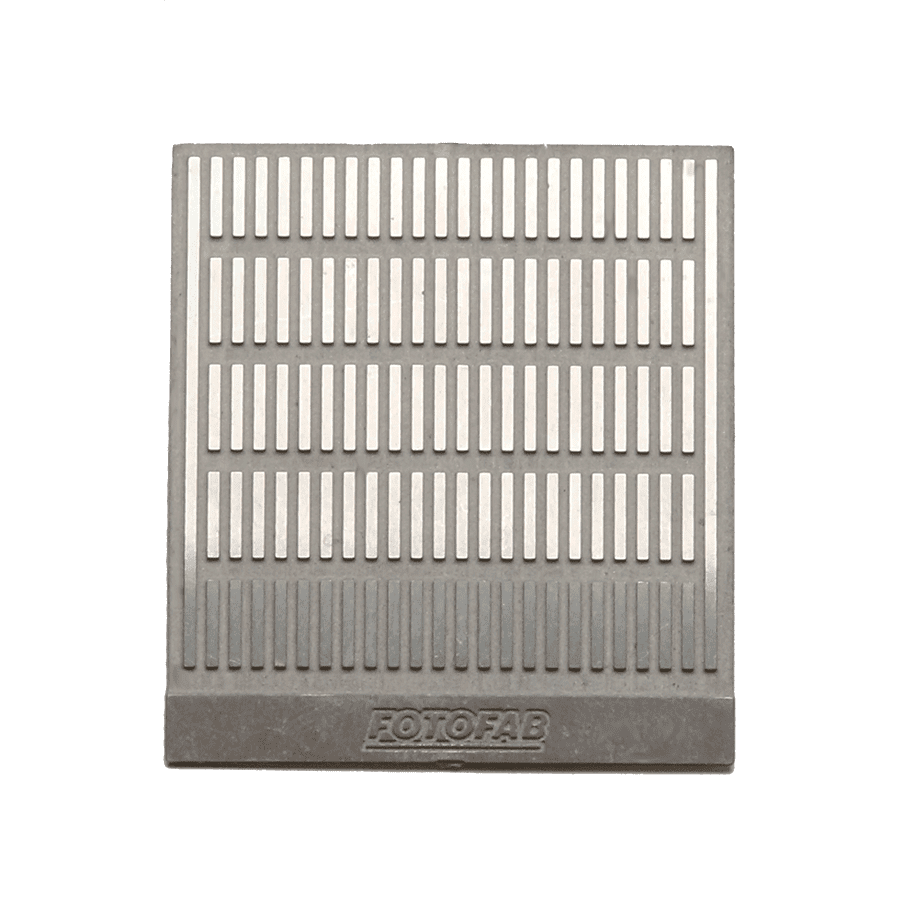Selective Etching
Selective etching, also known as step etching or depth etching, is the process of partially etching a sheet of metal in designated areas. This technique is a resulting benefit of using the photochemical etching method of metal fabrication. We can chemically etch approximately half the thickness of the original metal sheet to produce desired details.

Uses for Selective Etching
Selective etching is used for a variety of features and applications when it comes to double-sided metal parts. Common requests for half-etched features include: identification numbers, company logos, creating a recessed area to place and protect a self-adhesive label, and forming flow channels.
In recent years, the request for flow channels has increased with the growth of the alternative energy market. Half etching can be used to manufacture heat exchanger and fuel cell plates. These plates can be joined together with diffusion bonding to create closed systems with intricate interiors. As the demand for electric and hydrogen vehicles continues to rise, selective etching is used to create the fluidic channels required for efficient flow distribution within the fuel cell.
Another instance where selective etching is preferred is to integrate bend (score) lines into a design. This makes the half-etched area more malleable, creating a precise right, acute, or obtuse angle between the folded metal faces.
Applications that benefit from bend lines include complex screen enclosures and RF shields for surface mount boards. Compared to other 3D manufacturing forming processes, selective etching is an efficient alternative that reduces both tooling costs and lead times and allows for easy manual folding.
Furthermore, if your part’s weight needs to be reduced, selective etching is a great option to remove excess metal without adding additional stress to the part that cutting or sanding can cause.
How is Selective Etching Accomplished?
In order to selectively etch a metal part through photochemical selective etching, you need to start in the design stage. During the design process of the part, the lines and features should be clearly identified in the drawing. Our technical drafting team will then design the phototool with the line or feature on only one side of the tool but not the other.
This allows the part to be etched on one side of the metal sheet and not the other, creating a half-etch line or selectively etched feature. Your specified part features are accomplished without etching all the way through the sheet.
Available Metals
Explore Metals We Chemically Etch
Here at Fotofab, we provide photochemical machining (chemical etching, acid etching) services for a wide range of metals and alloys.
Fotofab is committed to quality.






